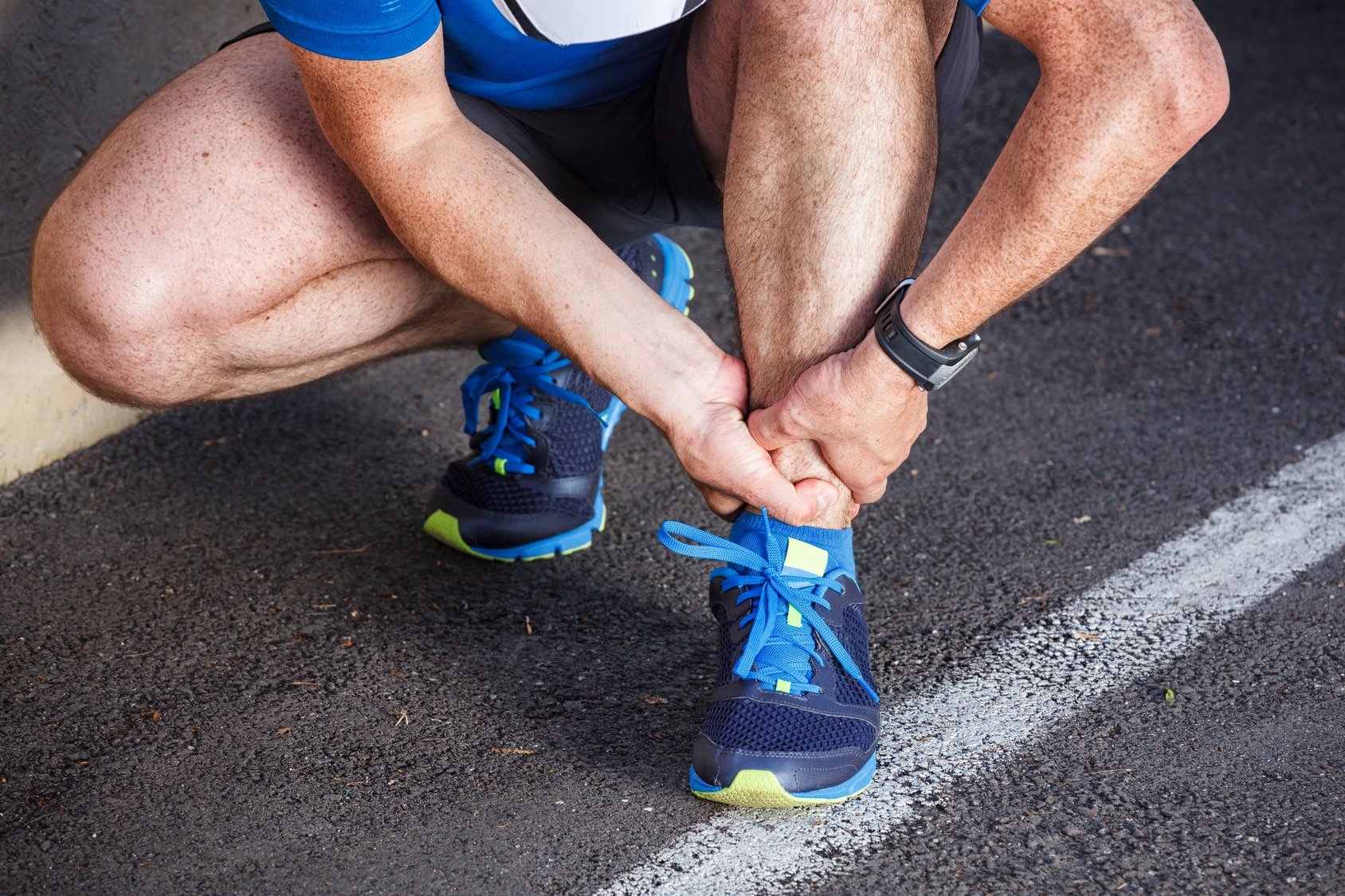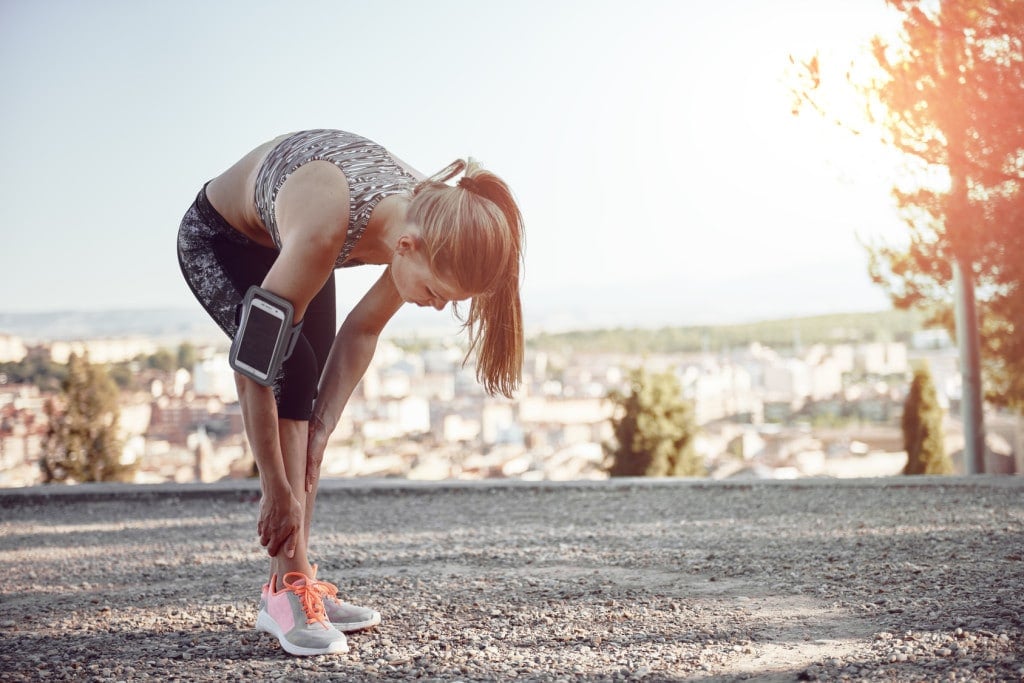Looking for practical guidelines to help you prevent plantar fasciitis for good? Then you’ve come to the right place.
Plantar fasciitis, a common overuse injury among runners, can significantly disrupt your running routine. This condition, characterized by inflammation of the tissue along the bottom of your foot, can be incredibly painful and frustratingly persistent, potentially sidelining you for weeks or even months.
Given that running is a high-impact activity, each step you take can stress your feet, making plantar fasciitis a frequent issue for runners. Therefore, prevention is absolutely crucial.
But there’s no need to worry. In this article, I’m going to share scientifically-backed guidelines to help you avoid this all-too-common injury. We’ll delve into effective prevention strategies, from selecting the right footwear to adding foot-specific exercises to your training regimen.
Interested in this offer?
Let’s dive in.
Understanding Plantar Fasciitis
So, what’s the deal with plantar fasciitis? Well, it’s like the grumpy neighbor of your foot – the inflammation of the plantar fascia, a fancy band of tissue doing a marathon along the bottom of your foot, connecting the heel to the toes.
Now, if you’re a runner, you might have already had a not-so-pleasant rendezvous with this condition. It’s that heel pain giving you the side-eye, thanks to all the stress and pounding your feet endure during those runs.
Here’s the kicker: Plantar fasciitis isn’t just a pain in the heel; it’s also a serious training buzzkill. The pain can be a real party pooper, especially when it hits you with its A-game in the morning or after a Netflix marathon on the couch.
Now, onto the good stuff. Ready? Let’s roll.
How To Prevent Plantar Fasciitis When Running
Treatment may take up to a months-long combination of rest, ice, rehab, and even medication. That’s why you’re better off not getting injured in the first place.
When it comes to dealing with plantar fasciitis, the adage “An ounce of prevention is worth a pound of cure” couldn’t be more true.
Keep on reading to learn more about protecting your plantar fascia and preventing any future pain.
Wear the Right Shoes
For runners, selecting the right footwear is not just a matter of comfort; it’s a critical decision for injury prevention, particularly when it comes to conditions like plantar fasciitis.
Go for running shoes that provide ample support for your entire foot. These shoes should have a thick sole to cushion your heel and prevent it from shifting excessively. It’s crucial to replace your running shoes every 400 to 500 miles because the structural integrity of the shoe diminishes over time.
Additionally, consider your choice of casual shoes. Avoid footwear with heels that can strain your arch during everyday activities, as this can contribute to plantar fasciitis. Choose comfortable, supportive shoes for daily wear to protect your feet.
Additional resource – Running shoes for plantar fasciitis
Stretch Your Plantar Fascia
Calf tightness can contribute to the development of plantar fasciitis. When both your Achilles and plantar fascia are tight, they can exert tension on the plantar fascia, leading to irritation and weakening of its attachment to the bone.
Research from the University of Rochester suggests that performing stretching exercises tailored to the plantar fascia can effectively alleviate pain and support long-term recovery.
Incorporate these stretches into your daily routine, particularly in the morning and after a run. A recommended regimen includes three to five sets of 20 to 30 seconds for each stretch.
Here are some of the stretches you should consider:
Towel Stretch
Sit with your legs extended. Place a towel around the ball of your foot and gently pull the towel towards you while keeping your knee straight.
Foot Writing
Although not artistic, writing the alphabet with your foot can be beneficial. It’s a simple exercise for your plantar fascia.
Calf Stretches
These stretches are practical for your calves. Include them to maintain muscle flexibility.
Heel Drops
Elevate your heels on a step, allowing them to hang and stretch. It’s a useful exercise for your foot’s well-being.
Additional resource – How to prevent calf pulls from running
Strength Train
Building strength through targeted exercises is like giving your feet a reliable bodyguard against injuries like plantar fasciitis. You want your foot squad to be strong and ready for action, right?
And don’t my word for it.
Studies from the American Journal of Sports Medicine highlight that incorporating strength training into your routine can significantly decrease the risk of injuries like plantar fasciitis.
Here are some exercises that will have your foot muscles flexing their strength muscles:
Calf Raises
Stand tall, rise up onto your tiptoes, and feel the burn in your calf muscles.
Toe Curls
Give your toes a workout by curling them inwards, working those muscles in the midfoot.
Doming
Elevate the arches of your feet by doming – it’s like a mini dance for your foot muscles.
Toe Spread & Squeeze
Spread those toes out and then squeeze them back together. It’s a toe party for foot stability.
https://www.youtube.com/watch?v=_izMb3PPamI
Roll Your Plantar Fascia
Rolling your foot over a cold water bottle is an excellent way to alleviate fascia pain and reduce the risk of injury. After a run, grab a frozen water bottle and roll it under your foot for 5 to 10 minutes, with a focus on your arch.
After a run, treat your feet to a cool and soothing session with a frozen water bottle. It’s like a mini ice bath for your feet, minus the icy plunge. Here’s how to roll with it and keep your fascia feeling fantastic:
Get a frozen water bottle and do the following:
- Rolling Time: Grab your frozen water bottle and roll it under your foot. Focus on the arch area – it’s like giving your foot a refreshing massage.
- Pressure Points: Apply some firm pressure to key areas—start with the middle, then shift to the inner and outer edges. Hold each spot for about 20 to 30 seconds.
- Keep it Moving: Don’t park your bottle in one spot for too long. Keep the roll going to hit all the important areas.
Check out the cool technique here
This chilly trick isn’t just about feeling the freeze. It’s a strategic move to manage inflammation, keep your foot flexible, and say goodbye to fascia pain.
Try Athletic Tape
If you’re dealing with plantar fasciitis, consider the benefits of using athletic tape. This technique, known as Kinesio taping, has proven effective in managing symptoms. By using plantar fasciitis tape to provide arch support and reduce tension on the fascia, this technique helps relieve pain and improve comfort throughout the day.
Here a are few reasons:
- Enhances Blood Flow: Improves blood circulation to the foot.
- Provides Support: Offers structural support to the foot.
- Addresses Inflammation: Aids in reducing inflammation and swelling.
- Gentle Compression: Applies gentle compression to the affected area.
- Limits Movement: Restricts movements that may worsen symptoms.
Research validates its effectiveness. A review of eight studies indicates that taping can bring short-term relief to individuals with plantar fasciitis
Keep in mind that various types of Kinesio tape are available, so choose the one that suits your needs best.
The following Youtube tutorial should get you started on the right foot:
Use A Night Splint
Consider night splints as a practical aid in managing plantar fasciitis. These devices play a helpful role by stretching the calf and plantar fascia while you sleep.
Here’s how night splints work:
- Stretching Effect: They create a gentle stretching effect on the calf and plantar fascia.
- Prevent Tightening: By keeping the plantar fascia stretched, they prevent it from tightening or cramping.
- Chronic Cases: Particularly useful for chronic cases of plantar fasciitis.
- Pain Relief: Aid in stretching the plantar fascia, contributing to pain relief.
- Maintain Foot Position: Help maintain the correct foot and ankle position during sleep.
If you frequently experience plantar fasciitis, incorporating night splints into your routine can be beneficial. They provide continuous stretching, addressing the condition even while you rest.
However, it’s crucial to consult with your doctor or podiatrist before choosing a night splint. They can offer guidance on the most suitable option based on your specific needs. Night splints can be a valuable addition to your plantar fasciitis management plan, contributing to relief and improved foot health.
Run On Soft Surfaces
To safeguard yourself against injuries like plantar fasciitis, consider adjusting your running surface. The type of terrain you run on can significantly impact the stress your feet endure, influencing the health of your plantar fascia.
Here are three reasons why shoft surface matter:
- Varying Stress Levels: Different surfaces exert different stress levels on your feet.
- Impact Reduction: Softer surfaces reduce the impact on your feet, minimizing the strain on your plantar fascia.
- Hard Surfaces Warning: Hard and uneven surfaces can increase stress, potentially leading to inflammation and plantar fascia stress.
Here’s how to choose wisely;
- Opt for Soft Surfaces: Whenever possible, choose softer running surfaces to mitigate stress.
- Even Terrain Advantages: Running on even terrain decreases the risk of landing incorrectly, reducing strain on tendons and ligaments.
- Park Paths: Well-groomed paths in parks or other soft surfaces are preferable to concrete sidewalks or rough terrain.
What’s more?
You should also incoporate a variety of running surfaces into your training routine to balance stress on your feet.
Improve your Running Form
Ensuring proper running form is pivotal to minimizing the likelihood of plantar fasciitis. The way you run profoundly influences the stress on your feet, particularly the plantar fascia.
For example, excessive inward rolling of your foot upon landing can stress the plantar fascia, heightening the risk of injury. Plus, a severe heel strike can also increase stress on the plantar fascia.
Here’s how to improve your form. Start by paying close attention to your foot pronation during your running stride. Instead of a heavy heel strike, aim to land more evenly on the middle of your foot. Landing evenly distributes impact, easing stress on your heel and maintaining plantar tendon flexibility.
Maintain a Healthy Weight
Maintaining a healthy body weight and embracing sound nutrition are pivotal factors that contribute to overall foot health, playing a vital role in injury prevention—plantar fasciitis is no exception.
Let me explain. Excess body weight places substantial strain on your heels, the plantar fascia ligament, and the arch and ball of your foot. When running, your feet can handle up to two and a half times your body weight during shock absorption. Running at a faster pace intensifies this strain.
In simple terms, every ten pounds of body weight translates to a significant 25-pound impact on your feet.
That’s why losing excess weight significantly alleviates the load on your plantar fascia ligament and other supporting foot structures. It serves as a proactive measure, diminishing the likelihood of developing or worsening plantar fasciitis.
Know Your Limits
Listening to your body and respecting your limits is crucial in preventing overuse injuries like plantar fasciitis. . Pay close attention to your body’s signals, including signs of fatigue and soreness, and tailor your training regimen accordingly.
Striking a balance between pursuing your running goals and allowing your body sufficient time to adapt and recover is key. Avoid pushing beyond your limits to ensure a sustainable and injury-free running journey.
When your body signals fatigue or discomfort, heed the call. Recognizing these signs early on is crucial in preventing injuries.
Looking to increase your weekly mileage? Then do so gradually. Abrupt changes can subject your feet to excessive stress, paving the way for injuries like plantar fasciitis.




